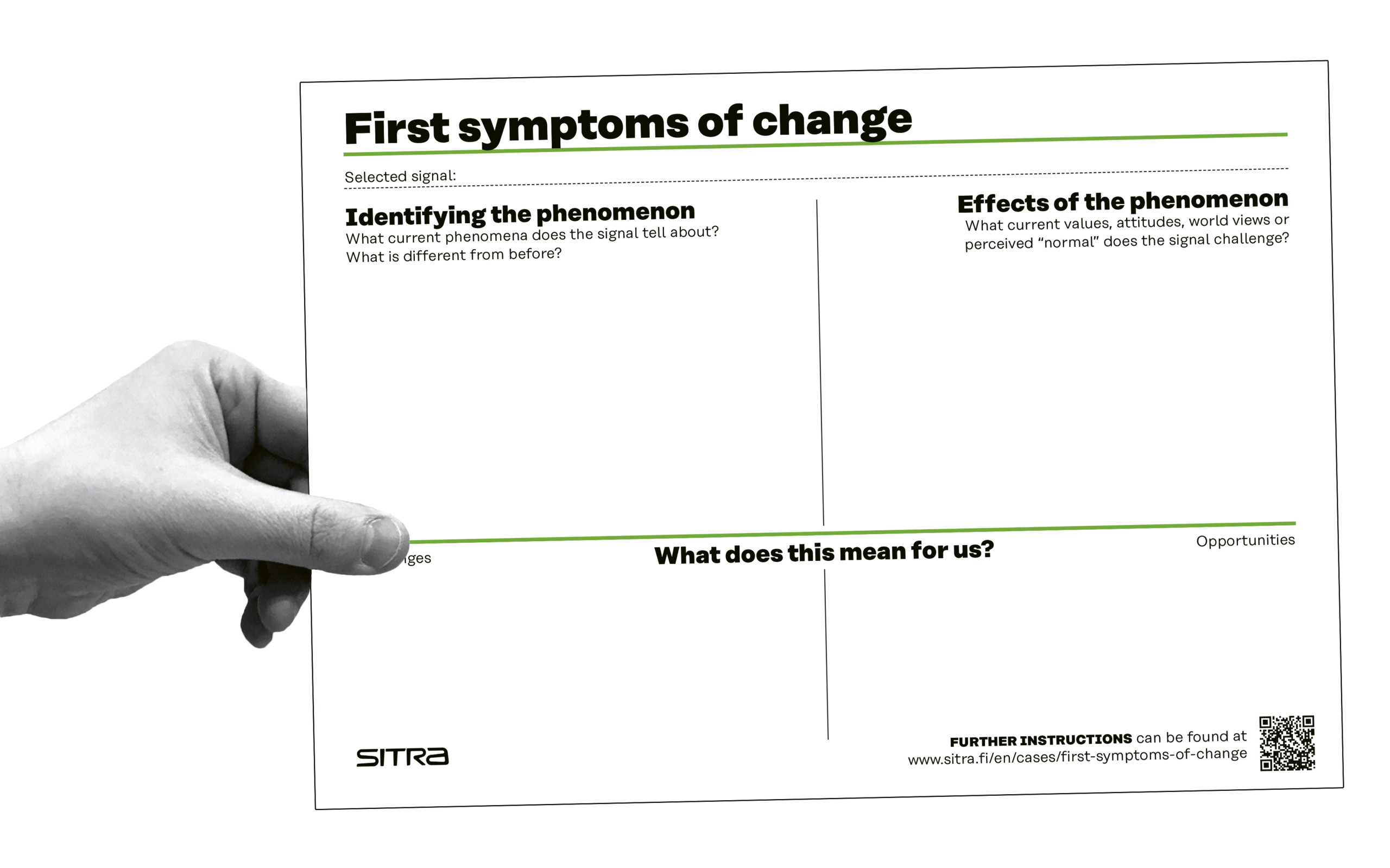A weak signal is the first symptom of a change or a sign of an emerging thing that may be significant in the future (Hiltunen 2010). It is something that has actually already happened, but that seems strange, surprising, ridiculous or outrageous to the observer and can be interpreted as a sign of a bigger and potential change.
Weak signals provide a way to look at current changes from a new perspective. This is because they are basically things that surprise and confuse us, prompting us to reflect on what is changing or different from before. In addition, they challenge our assumptions about what is “true” or “normal.”
The First symptoms of change template can be used to identify the first symptoms of changes and their effects, as well as to consider what changes mean for your organisation or community, for example.
Preparation
Print the template or prepare a digital template. Select the signal or signals you will use when you work. If you need help in observing signals, you should familiarise yourself with the Weak signals explorer tool.
Working
First, select the signal or a related set of signals that you want to analyse. After that, proceed in accordance with the questions in the template, discussing together and documenting the most important highlights of the discussion to the template. In the “What this means for us” section, decide whether you will observe individuals, your own organisation, your industry or society as a whole, for example.
After the work, summarise as appropriate, identify the necessary measures or responsible persons.
You can also have a reflective conversation by asking the following questions:
- What new things do you understand about your operating environment?
- How should you change the operation in the light of the signals?
- How do you prepare for the challenges indicated by the signals, and how do you seize new opportunities?
- What did you learn about the observation, interpretation and use of weak signals?
- If you have also worked with trends or megatrends, do the signals challenge the conclusions you have drawn from them?
Tips
Tips for observing weak signals can be found in the Weak signals guide.



Recommended
Have some more.
Weak signals from the future
Speculate on futures
Weak signals explorer